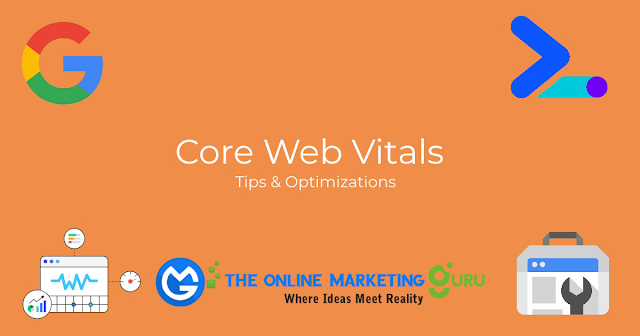Optimising Core Web Vitals for SEO
With 2021 closing in on us, we at The Online Marketing Guru decided to shift our focus to fresh market trends. Today’s hot
topic is the Core Web Vitals. While they are nothing new to web
experts, most business owners may not be aware of their importance. Like most
of Google’s policies, you will find Core Web Vitals' direct
link with user experience, which is undoubtedly the ranking factor in the
coming year. So, heads up! If you fail proper search engine optimisation, it
may cause you trouble. Your best bet is to be either well-versed in the
techniques for ethical business ranking or bring in someone who is. Those who
are up-to-date with Google’s wish to update the algorithm are already
optimising based on the user-experience angle. Those who are new to it, fret
not for we will clear most of your queries.
Using Core Web Vitals to Measure Performance
When you’re doing online business, a simple method that retains your
value to your audience is page experience. Often, your website’s functionality
impacts a visitor’s impression of your business. An easy-to-navigate website is
always better than a complicated one. Positive user experiences boost your
pages’ search results. It may not occur to you, but when someone unhappy with a
website tells their friends about their experience, you’re quite clearly losing
the edge.
Over the years, Google has offered several tools to measure
performance. The Online Marketing Guru has been working with
them, understanding their usage and the ways to heighten it. Some developers
also face a hard time in trying to keep up with the latest tools. If you own a
website, you must fully realise the quality of experience you are giving your
users. With the help of Core Web Vitals, we can reduce the complexities
while helping your site concentrate on the most crucial elements.
The elements that form the Core Web Vitals are
ever-changing. For now and the upcoming year, we can tell what Google is
focussing on. These are the three aspects of user experience, viz, loading,
interactivity and visual stability; their metrics and thresholds that you need
to know:
- LCP (Largest Contentful
Paint) is used to measure your webpages’ loading speed. When the LCP is
within 2.5 seconds since the start of loading, you can be happy knowing
you are providing your user with a good experience.
- FID (First Input Delay) is
used to measure interactivity. For a happy user experience, remember that
the pages need to have lesser than 100 milliseconds of FID.
- CLS (Cumulative Layout Shift)
measures the visual stability of your website. A CLS higher than 0.1 means
a bad user experience.
At The Online Marketing Guru, we measure the 75th percentile
of page loads taking place throughout both computers and mobile devices to make
sure that a website is precisely striking the recommended target for the
majority of users.
Ever-Changing Core Web Vitals
As we mentioned earlier, Core Web Vitals are frequently
evolving and work as signals that business owners and developers have at our
disposal to measure the experience-quality of users across the web. However, as
expected from Google, these signals will keep evolving to serve the purpose
better, so there may be additions and improvements in the coming months or
years. Any kinds of alterations or adjustments made to the Core Web
Vitals will have a direct impact on how most of the procedures will
work in the future.
While understanding the Core Web Vitals is not hard,
applying them to your webpages can use a skilled approach. The OnlineMarketing Guru excels in Google’s algorithms and everything related to
SEO for improving businesses. Get in touch with us for web-related expertise.



Comments
Post a Comment